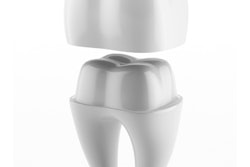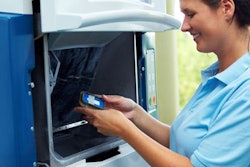
The introduction of new materials for CAD/CAM systems and improvement in bonding techniques have made treatments such as ceramic laminate veneers possible. But how do these veneers hold up over five years? Researchers studied two glass-ceramic blocks to find out.
For their study, they used Ivoclar Vivadent's IPS Empress CAD and IPS e.max CAD blocks. While the survival and success rates were good for both, one scored better, the researchers reported in the Journal of Prosthodontic Research (June 21, 2018).
"The success rate of e.max CAD veneers was significantly higher than Empress CAD veneers," the authors wrote.
The study was led by Farahnaz Nejatidanesha, a professor in the Dental Materials Research Center at the Isfahan University of Medical Sciences School of Dentistry in Isfahan, Iran.
5-year results
The researchers wanted to test two types of ceramics for CAD/CAM technology to see how they held up in patients' mouths for 60 months. They initially thought there would be no clinically significant differences between the two veneers.
The researchers placed 197 ceramic laminate veneers in 71 patients in a private practice (92 IPS Empress CAD and 105 IPS e.max CAD). The restorations were made using a Cerec AC with Cerec Bluecam unit (Dentsply Sirona).
They measured the success and the survival of the blocks, along with their performance in terms of various features as measured by modified California Dental Association (CDA) criteria. The criteria generally have four categories: Alfa and Bravo as acceptable, and Charlie and Delta as not acceptable, but there were no Charlie and Delta results, save two fractures in IPS Empress CAD veneers.
The IPS e.max CAD veneers generally performed at a higher level after the five-year follow-up period, the researchers found. The results of the Alpha and Bravo categories are shown below:
| Comparison of 2 CAD/CAM blocks by CDA criteria after 5 years | ||
| Features | IPS Empress | IPS e.max |
| Shade match | ||
| No mismatch | 75 (83.3%) | 94 (89.5%) |
| Slight mismatch | 15 (16.7%) | 11 (10.5%) |
| Marginal gap | ||
| No probe catch | 82 (91.1%) | 101 (96.2%) |
| Slight probe catch but no gap | 8 (8.9%) | 4 (3.8%) |
| Fractures | ||
| No facture | 87 (92.7%) | 105 (100%) |
| Chipping of porcelain that does not impair aesthetics or function and does not expose tooth structure | 3 (5.5%) | 0 |
| Loss of retention | ||
| No debonding | 86 (95.6%) | 105 (100%) |
| Debonding, may be recemented | 4 (4.4%) | 0 |
| Hypersensitivity | ||
| No hypersensitivity | 90 (100%) | 105 (100%) |
| Hypersensitivity disappearing after removal of the stimulus | 0 | 0 |
The IPS e.max CAD veneers had better five-year survival (100% versus 97.8%) and success rates (100% versus 92.4%), the researchers reported.
High survival rate
The authors listed several study limitations, including the following:
- The results of this study were obtained from one private practice and cannot be generalized.
- The CAD/CAM blocks were selected according to the availability, and this nonrandomized selection may have influenced the results.
While the overall survival rate was high for both veneers, one had a higher success rate, the study authors noted.
"The evaluation of the quality of veneers using CDA criteria showed that all the restorations were acceptable except two fractured failed IPS Empress CAD veneers," they wrote.



















